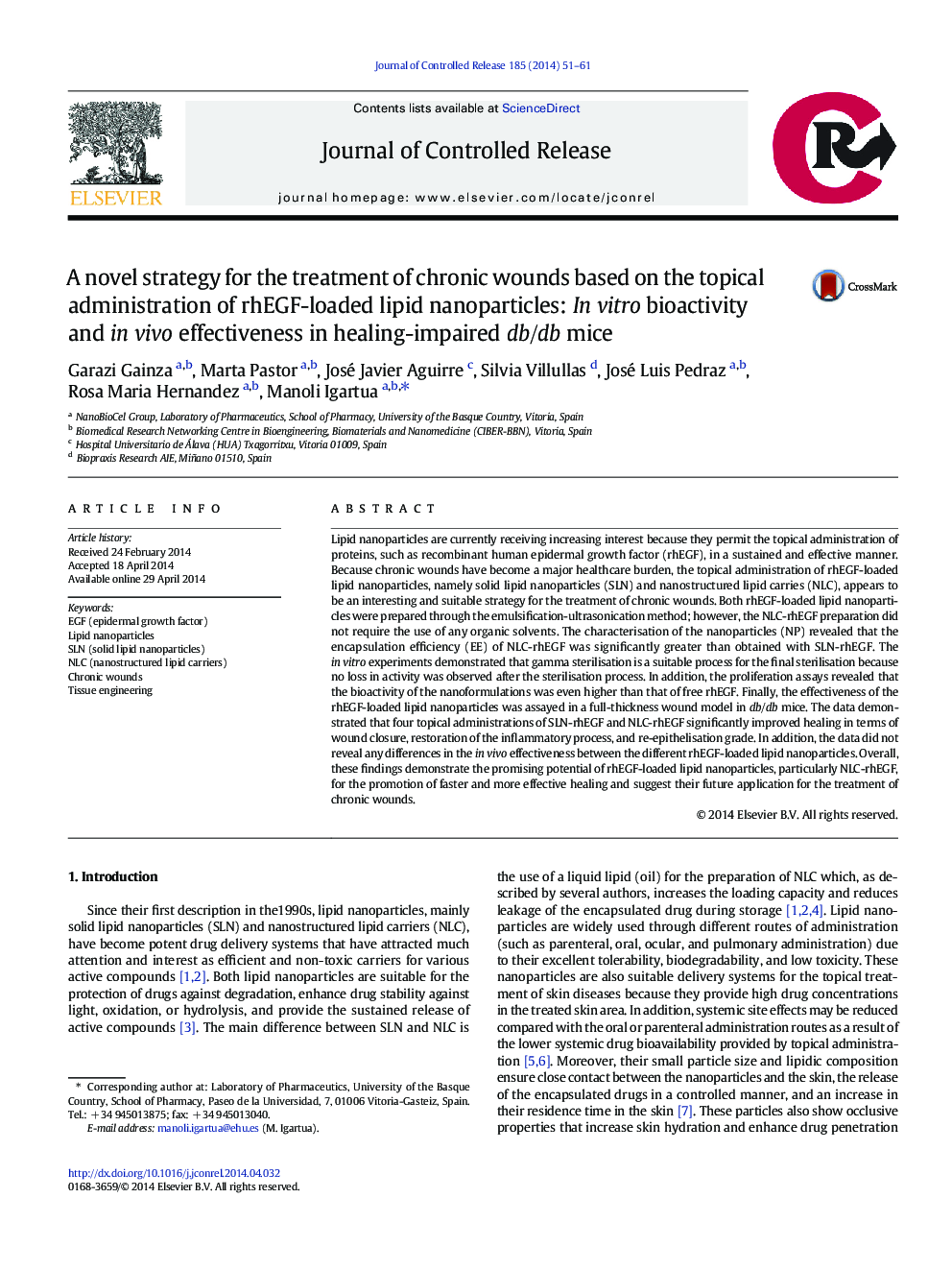| کد مقاله | کد نشریه | سال انتشار | مقاله انگلیسی | نسخه تمام متن |
|---|---|---|---|---|
| 1424044 | 1509064 | 2014 | 11 صفحه PDF | دانلود رایگان |

Lipid nanoparticles are currently receiving increasing interest because they permit the topical administration of proteins, such as recombinant human epidermal growth factor (rhEGF), in a sustained and effective manner. Because chronic wounds have become a major healthcare burden, the topical administration of rhEGF-loaded lipid nanoparticles, namely solid lipid nanoparticles (SLN) and nanostructured lipid carries (NLC), appears to be an interesting and suitable strategy for the treatment of chronic wounds. Both rhEGF-loaded lipid nanoparticles were prepared through the emulsification-ultrasonication method; however, the NLC-rhEGF preparation did not require the use of any organic solvents. The characterisation of the nanoparticles (NP) revealed that the encapsulation efficiency (EE) of NLC-rhEGF was significantly greater than obtained with SLN-rhEGF. The in vitro experiments demonstrated that gamma sterilisation is a suitable process for the final sterilisation because no loss in activity was observed after the sterilisation process. In addition, the proliferation assays revealed that the bioactivity of the nanoformulations was even higher than that of free rhEGF. Finally, the effectiveness of the rhEGF-loaded lipid nanoparticles was assayed in a full-thickness wound model in db/db mice. The data demonstrated that four topical administrations of SLN-rhEGF and NLC-rhEGF significantly improved healing in terms of wound closure, restoration of the inflammatory process, and re-epithelisation grade. In addition, the data did not reveal any differences in the in vivo effectiveness between the different rhEGF-loaded lipid nanoparticles. Overall, these findings demonstrate the promising potential of rhEGF-loaded lipid nanoparticles, particularly NLC-rhEGF, for the promotion of faster and more effective healing and suggest their future application for the treatment of chronic wounds.
Figure optionsDownload high-quality image (375 K)Download as PowerPoint slide
Journal: Journal of Controlled Release - Volume 185, 10 July 2014, Pages 51–61